
Real Zombies and Body Snatchers Live Among Us
A creepy form of parasitism is one of evolution’s favorite strategies, and scientists are starting to figure out how it works.
When Roberto García-Roa set off into the Peruvian jungle one morning, he was not expecting to come face to shriveled face with a zombie. García-Roa, an evolutionary biologist at the University of Valencia in Spain, was exploring Tambopata National Reserve, a slice of tropical rain forest in Peru’s southeast corner that’s famous for its biodiversity. He set off along the narrow trails that crisscross its dense vegetation in hopes of documenting some of its rarer residents, such as jaguars.
But he found something else, what he calls “an unrivaled situation for lovers of the hidden universe.” Perched atop a leaf, its head resembling a raisin, were the remains of a fly. A half-dozen stalk-like formations sprouted from its body like tiny, ominous mushroom clouds. And, in a sense, they were.
García-Roa had just come across an example of a parasitic “zombie” fungus from the genus Ophiocordyceps, a notorious gang of real-world body snatchers. These fungi infect flies, ants, and other insects, feasting from the inside out and also controlling their hosts’ movement, forcing them to relocate to higher areas. The parasite then produces fruiting bodies that erupt through the host’s exoskeleton and release what parasitologist Gabor Racz calls “spore bombs.” These spores then rain down from their high position, infecting as many nearby insects as possible.
If you think that’s ghastly, wait until you hear about the wasp that takes over the mind of a cockroach, then saddles up and rides it all the way home as the ultimate packed lunch for its offspring.

Parasitism is rampant in the natural world—nearly half of all animal species are parasites, for example. And a large number of these uninvited plus-ones manipulate their host’s behavior in some way to produce an advantage for themselves, occasionally taking complete control of the organism they have invaded. Thanks to advances in imaging and molecular analysis, scientists are now able to understand some of the insidiously clever ways the body snatchers take over their victims. And yes, humans are at risk from a few of them. Fortunately, however, our relatively young age as a species means most parasites haven’t had time to figure out how to turn us into compliant hosts. Yet.
“Insects have been around for millions of years, and many of these parasites have been around for hundreds of millions of years,” says Racz, collections manager of the Manter Laboratory of Parasitology at the University of Nebraska-Lincoln and a coauthor of the upcoming book Parasites: The Inside Story. Humans, on the other hand, are just a couple hundred thousand years old, and, well, we’re complicated.
“A couple of years ago, I watched the movie The Host, and aliens take over people and control them,” says Racz. “It’s a good movie, but I was watching it as a parasitologist, and a biologist, and that level of control is impossible.… Insects have a much simpler body plan.”
Before you breathe a sigh of relief, however, consider that, while parasites are generally not great at grabbing the reins of complex organisms, the ones that can manipulate the behavior of their hosts tend to be very, very good at it.
“These parasites usually target some kind of simple hormonal system, or neurotransmitters,” Racz says. “It’s not a fine-tuned control, but more about triggering some existing behavior.”
Take that cockroach-riding wasp. The female jewel wasp (Ampulex compressa) attacks an American cockroach (Periplaneta americana) with a one-two punch, or rather, sting, that targets precise areas of its nervous system. The first strike partly immobilizes the roach. The second, with a (literally) mind-altering cocktail of venom delivered into a specific part of the brain, allows the wasp to climb up on the roach’s back, grab its antennae and lead it back to her nest. There, she lays eggs in the still-living and now immobile roach and leaves. The wasp’s offspring eat their way out of the roach, eventually killing it.
Frederic Libersat, a neurobiologist at Ben-Gurion University of the Negev in Israel, is senior author of a Journal of Experimental Biology paper, published in March, that revealed new details of how the jewel wasp controls her host through specific chemicals, particularly dopamine. Libersat says the genius of many of these host-manipulating parasites is that the host can’t evolve its way out of the situation.
Evolution is often a classic arms race: A mollusk-eating crab will eventually develop larger, more powerful claws as the mollusk evolves an ever-thicker shell, for example, says Libersat. When it comes to parasitic relationships involving host manipulation, however, he says, “The arms race doesn’t exist. It’s static and the parasite is winning.”
That’s because host-manipulating parasites often flood the organism’s system with chemicals it already needs to function—in much smaller amounts—so that it can hijack existing systems. For example, the hormone dopamine and the neurotransmitter GABA both help to regulate movement in organisms, from hapless cockroaches to human beings. The female jewel wasp’s venom is loaded with both chemicals, allowing her to first immobilize and then control the roach.
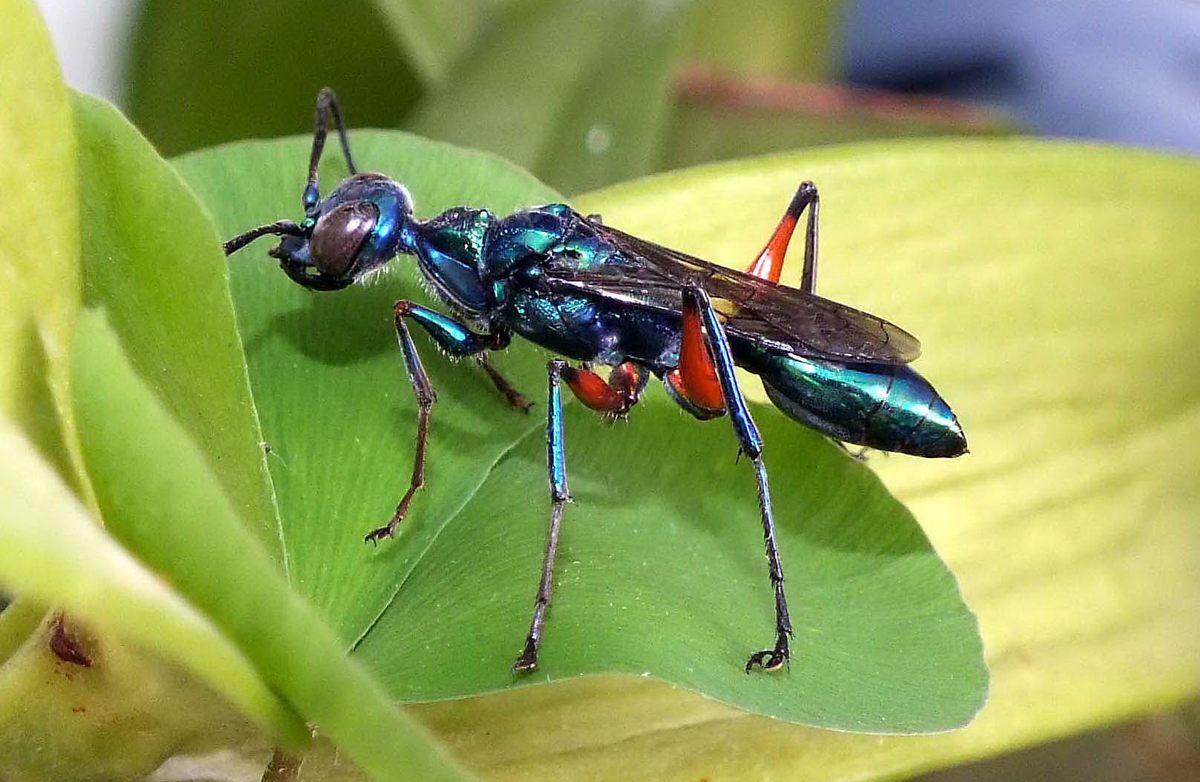
“It’s very smart of the parasite to tap into something that the animal has no way not to use,” says Libersat. Chemicals such as dopamine are so fundamental to an organism’s basic functions that it can’t simply evolve out of needing them. “You can’t say, the way I’m going to fight in this arms race is to remove all the dopamine in my central nervous system, and this way the parasite won’t have an effect on me,” Libersat says. “It won’t work.”
While scientists have long documented these kinds of parasitic relationships, it’s been only in the last few years that Libersat and his colleagues in the emerging field of neuroparasitology have been able to explain what is actually happening on a molecular level. “Most of the studies done before were descriptive,” says Libersat. “They showed some manipulation and said, ‘Well that’s very fascinating,’ and it was. But we hadn’t pinned down the mechanism.”
Now, thanks to the ability to turn specific chemical receptors on and off in organisms, either by injecting pharmacological agents or through genetic modification, and to observe results using micro-CT scans and other techniques, researchers are increasingly able to pinpoint exactly what’s happening in both host and parasite.
Much about the host-manipulating skills of parasites remains unknown, however. While Libersat and his peers have made considerable progress in understanding how some parasites control a host’s movement, for example, the mechanism behind more complex behavior manipulation remains elusive. For instance, the caterpillar of the Japanese oakblue butterfly (Narathura japonica) secretes a sugary goo that ants find delicious. The sweet treat is laced with chemicals that make the ants stay close to the caterpillar and also behave aggressively toward its potential predators. Presto, instant bodyguards. While the cocktail that the caterpillar serves up is not fully understood, it does appear to affect the ants’ dopamine levels, making them less likely to wander away.
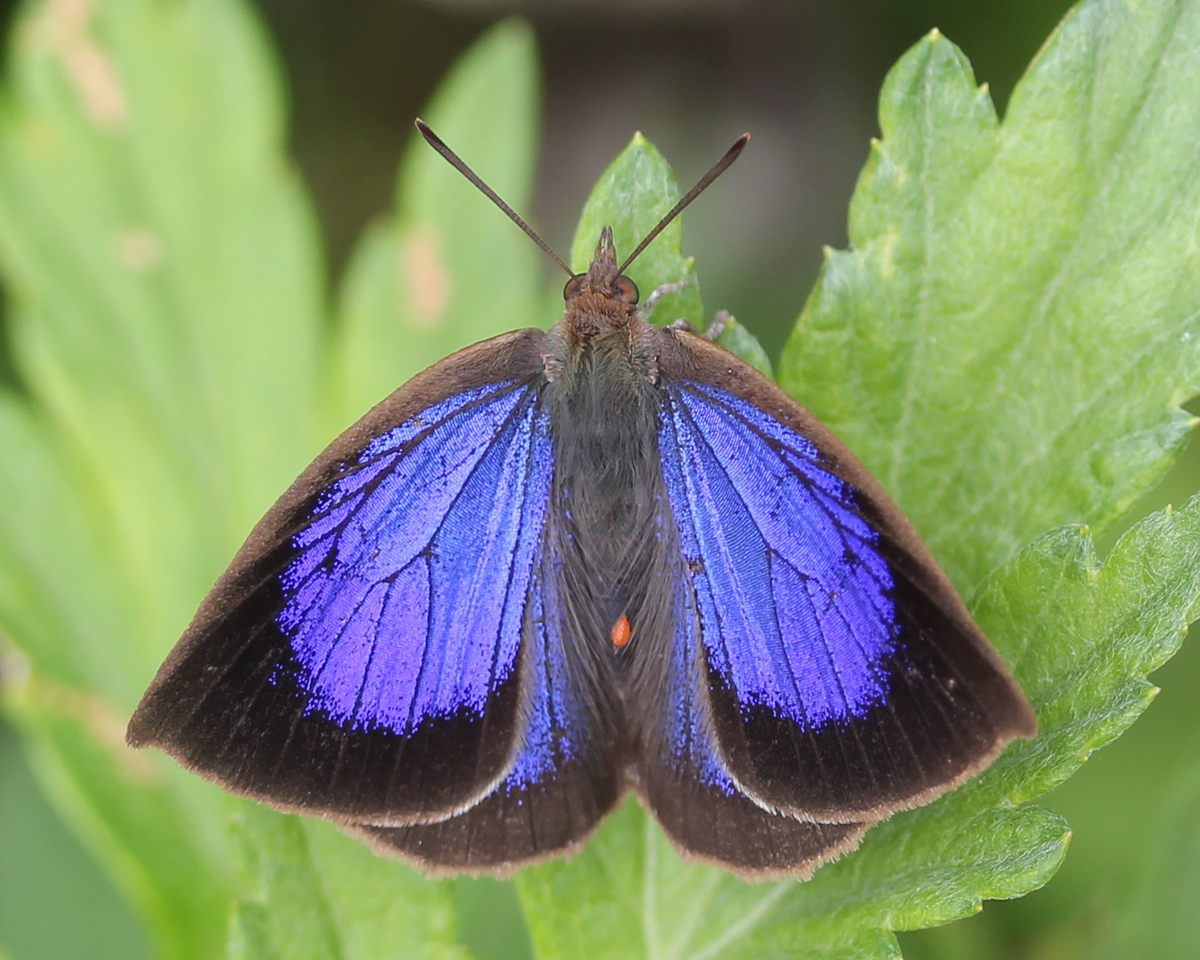
The mechanism that causes what scientists call “suicidal behavior”—such as infected crickets that drown themselves to release parasitic horsehair worm larvae into water—remains largely unknown as well. But such behavior is typically connected to the larval parasite moving from intermediate to final host, where it will reproduce. “When they jump hosts, the intermediate host has to be sacrificed,” says Racz. “So most of these odd behaviors, when they modulate the behavior of the host, happen when they are in the intermediate host.”
Consider the parasitic lancet river fluke (Dicrocoelium dendriticum), which has a complex life cycle involving multiple hosts, the penultimate of which is an ant. The ants eat slimy mucus-coated lumps, produced by infected snails, that contain late-stage fluke larvae. Once ingested, at least one of the larvae finds its way to a particular part of the insect’s brain—the same area targeted by a jewel wasp in a cockroach’s brain. Once the ant’s brain is infected, it does something no normal ant would do. It climbs up and then latches onto the top of a blade of grass or flower that’s at just the right height to be eaten by the final host.
“A grazing animal, usually a sheep or cow, comes by and accidentally ingests the infected ant, and the flatworm finishes its life cycle in the ruminant,” Racz says.
The authors of a 2018 paper published in Scientific Reports were able to document the fluke larvae’s presence in that area of the ant’s brain through micro-CT scans, but were not able to determine how it forced the ant to offer itself up to passing cows.
Body-snatching parasites don’t even have to get into the host’s brain to gain control. For example, Ophiocordyceps, the parasitic fungus that attacked the fly García-Roa photographed in Peru, simply built its own communications network in the insect’s muscles. Another genus of parasitic fungus, Gibellula, does something similar to spiders. According to a 2021 paper in the Canadian Journal of Zoology, Gibellula-infected spiders, like Ophiocordyceps-infected insects, climb to a higher position than uninfected spiders, then stretch out and become enveloped by the fungus. The parasite then eats the spider—aside from its exoskeleton—and sends up dozens of fruiting bodies. The end result is an eerily fuzzy, spider-shaped corpse shedding spores on everything below.
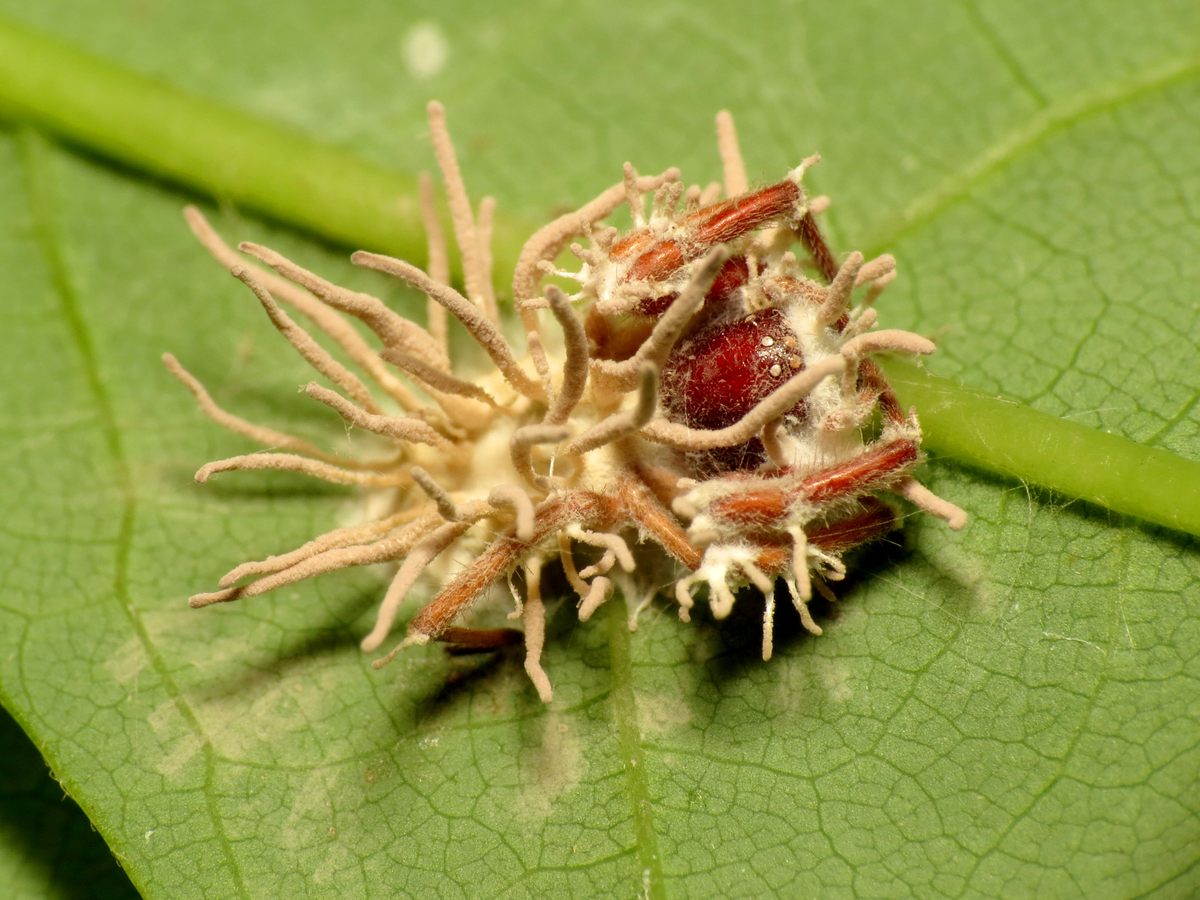
While cockroach-riding wasps, suicidal ants, and spore-bomb spiders might be nightmare fodder, the greatest zombifying threats to our species are less dramatic. The single-cell parasite Toxoplasma gondii has infected an estimated one billion people, according to a 2020 paper in the journal Parasites & Vectors—though other estimates put that number at more than three billion. While most people are asymptomatic, infection can be deadly for infants and people with weakened immune systems. Even non-fatal cases of toxoplasmosis can result in hallucinations and other psychotic symptoms when the parasite settles in brain tissue.
While the wily parasite can find a home in almost any part of any warm-blooded organism, from chickens to beluga whales, it’s when it’s nestled in the brain that it’s able to manipulate behavior to its advantage. A 2021 review of existing toxoplasmosis research found numerous examples in which animals infected with T. gondii became less fearful of their natural predators, and often more reckless, leading to increased risk of being eaten. Infected hyena cubs were almost four times more likely than healthy cubs to be eaten by lions, and infected chimpanzees showed less aversion to the scent of urine from cheetahs, their only natural predator. Numerous studies have found toxoplasmosis can raise testosterone levels in infected animals, which could account for the loss of fear and sometimes aggressive behavior seen in multiple species, including humans. For all this, we humans, along with many other animals, are just collateral damage on the parasite’s relentless drive to reproduce.
The final host of T. gondii, after all, is the cat, either wild or domestic. The parasite must find its way into a feline to complete its life cycle. The ease with which humans can get infected—through contaminated food, water, or air, or possibly via sexual transmission—has led some researchers to suggest that our relationship with the parasite is one of the oldest in our lineage, going back millions of years to when our ancestors were tasty meals for lions and other big cats.
There’s one other group of host-manipulating parasites that casts a long shadow on the human story: Lyssaviruses have haunted mammals, including us, for as long as any of us has been around. Members of this genus cause inflammation of the brain that leads to insatiable thirst, aggression, and other symptoms that may seem erratic but are all in service to the virus’s goal of spreading to other animals. You may not know the genus by name, but you know the disease it can cause: rabies.

While most other viruses multiply in lung, skin, or other tissues, says Racz, “The rabies virus is interesting because it specifically attacks nerve cells… and once it gets into the nerve cells, it’s incurable.”
The natural hosts of most lyssaviruses are typically canids—foxes, dogs, wolves—though bats, raccoons, and skunks are also common vectors. Once the animal is infected, it usually becomes aggressive, loses its fear response, and salivates with excessive thirst. “They’re not lethargic and hiding away and dying. They’re actually restless and move large distances,” says Racz. The virus is transmitted through a bite or saliva, so the changes in an infected animal’s behavior directly enhance the chance of a successful spread.
But Racz is quick to add that mind-controlling parasites are not that common in mammals. “We don’t have too many examples—maybe that’s good news,” he says.
And here’s more good news: While these host-manipulating parasites can be frightening, they can also be important for understanding why our brains and bodies behave as they do when we’re perfectly healthy. These fungi, viruses, and single-celled organisms have had millions of years to learn the ins and outs of their intended hosts, something scientists have only been studying for a couple centuries.
“It gives us a window on how behavior is generated, even in these simple animals, because we have other animals that manipulate the circuits,” says Libersat.
“These parasites are nature’s neurobiologists,” he adds with a note of respect. “Neurobiologists try to find the neural mechanism of a given behavior; they investigate the circuits that are involved in producing the behavior and then manipulate them pharmacologically … And here we have these parasites that are actually doing the same thing, though they have evolved over millions and millions of years to do that.”


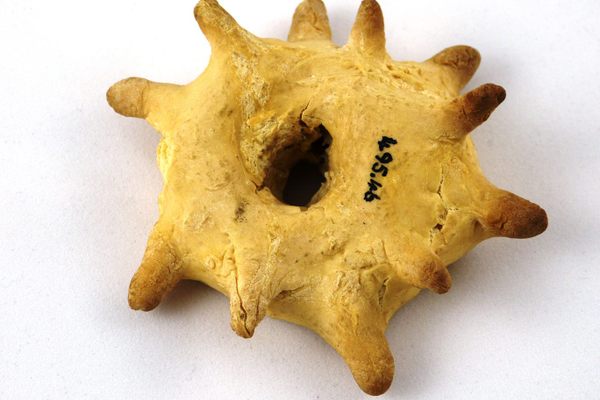

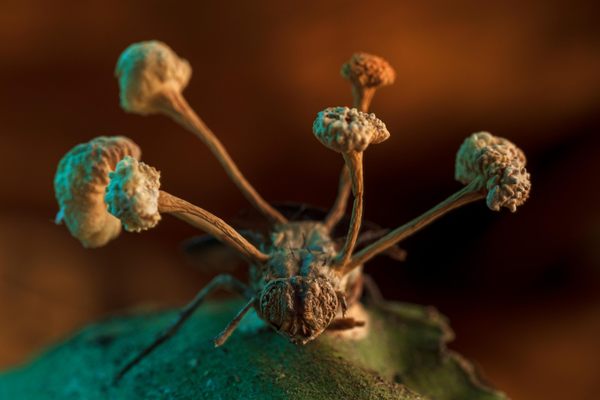
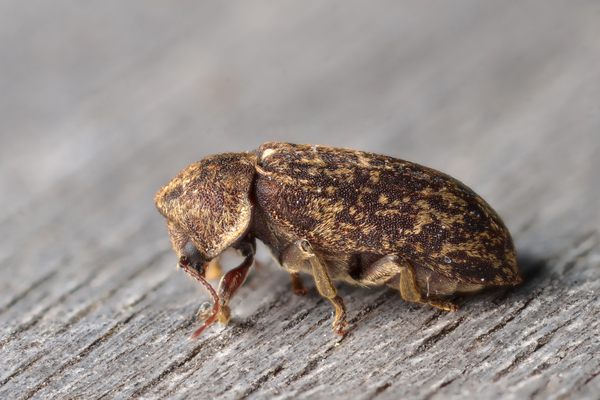
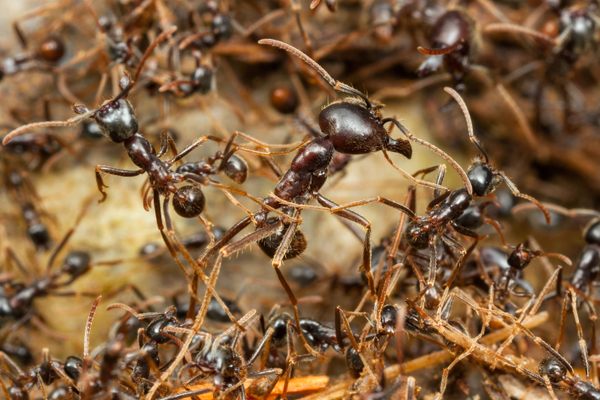



















Follow us on Twitter to get the latest on the world's hidden wonders.
Like us on Facebook to get the latest on the world's hidden wonders.
Follow us on Twitter Like us on Facebook